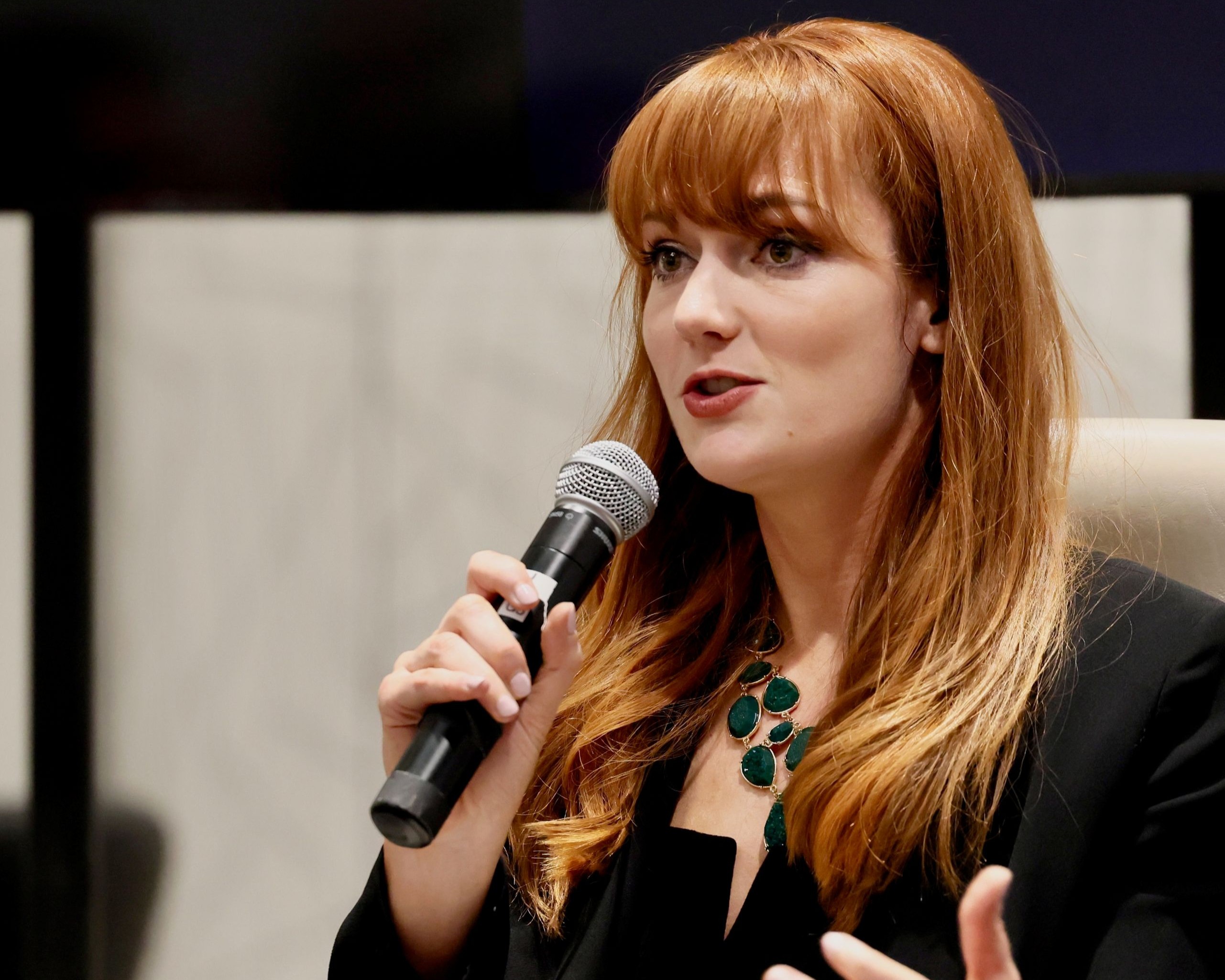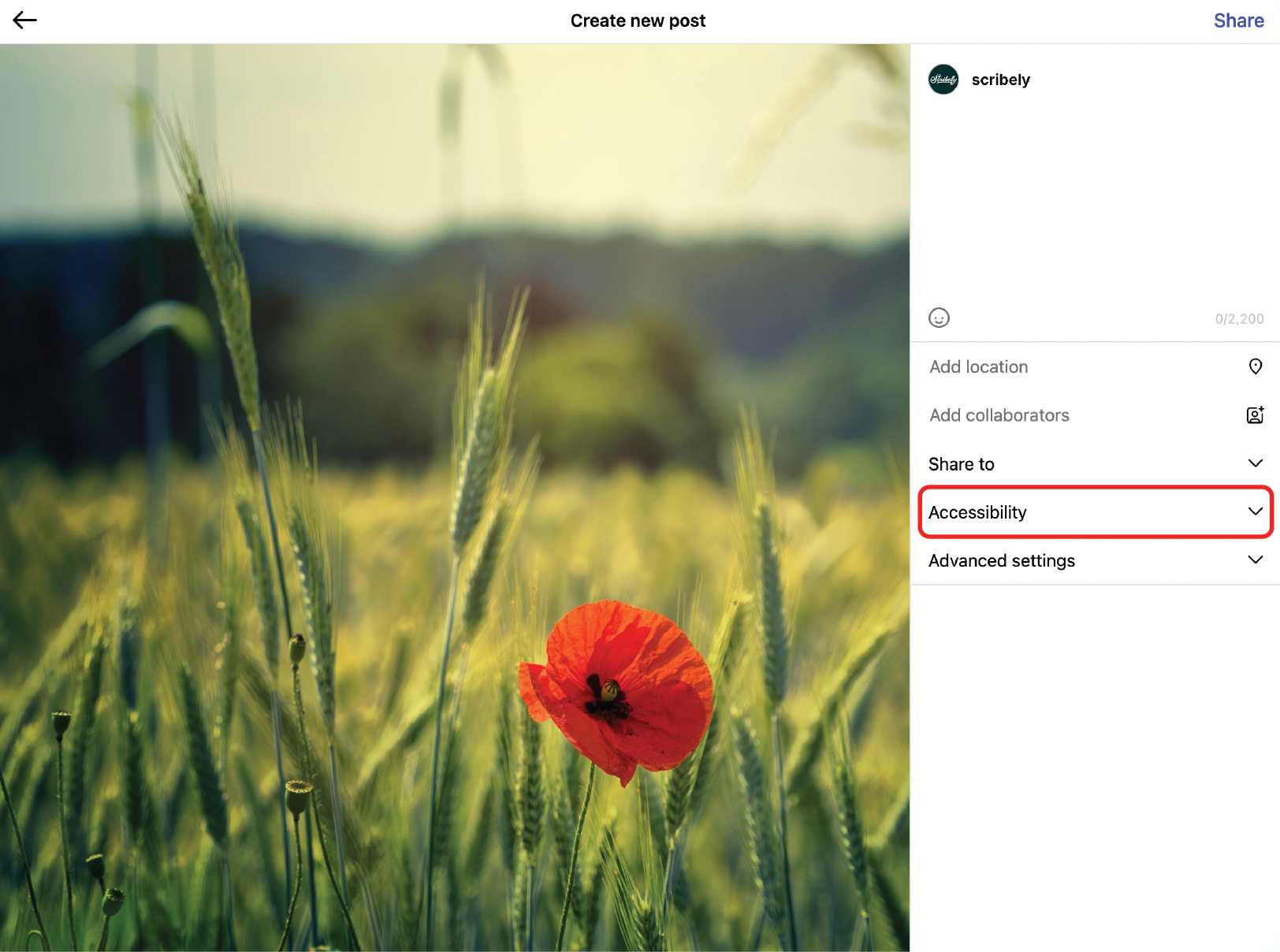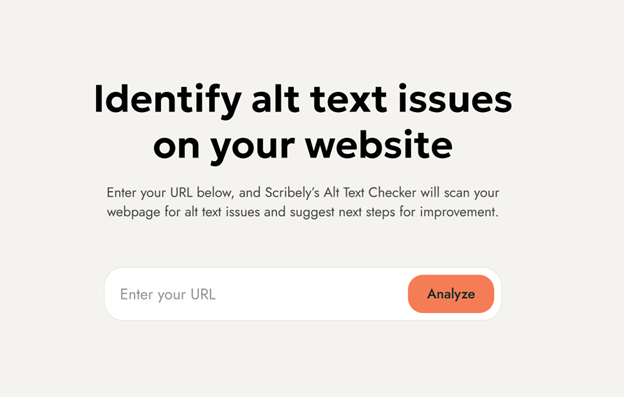Introduction
E-commerce relies heavily on images and videos to showcase products and their features. But this only works if a user can both see and hear the media. So how well is the e-commerce industry doing at incorporating web accessibility into their home pages, featured products, and social media? In the first report of its kind, Scribely set out to answer this question by analyzing the top 100 e-commerce sites in the U.S.
E-commerce relies heavily on images and videos to showcase products and their features. Companies provide visual media as a substitute for being able to experience a product in person, and when combined with product details, well-crafted product pages can help answer customers’ questions and even convince customers to purchase.
But this only works if a user can both see and hear the media. People who access the web in alternative ways require web content accessibility measures like alternative text, audio descriptions, and captions (see definitions section below) to bridge the gap, ensuring that anyone shopping on a page can understand a product and have their questions answered.
So how well is the e-commerce industry doing at incorporating web accessibility into their home pages, featured products, and social media? In the first report of its kind, Scribely set out to answer this question by analyzing the top 100 e-commerce sites in the U.S. These sites run the gamut of industries, from automotive to fashion, home and garden to gaming, sporting goods to weddings, and everything in between. The results provide a glimpse into the current state of e-commerce content accessibility for individuals using assistive technologies.
Key Findings
Overall
- For featured products, 97% of the top 100 e-commerce sites had inaccurate, incomplete, or missing alt text. For the 3 companies that had descriptive alt text, only 1 had consistently high quality alt text for every image on the page.
- Of the 41 featured pages on which product videos were found, only 34% had captions, 2% had transcripts, and 0% had audio descriptions.
- On home pages, not a single company’s content was fully accessible.
- For the 27 home pages that had some descriptive alt text, only 1 had alt text that was actually meaningful and descriptive for all images on the page.
- For social media, only 16% of companies had captions on their social media videos. Only 12% had descriptive alt text on Twitter, and only 3% had descriptive alt text on Instagram.
Top 10 Companies
- Only 1 had meaningful alt text on product page images, and only 2 had some descriptive alt text on home page images. None had descriptive and meaningful descriptions for all images on both pages.
- Only 1 had descriptive alt text on Twitter. None of the companies had descriptive alt text on Instagram.
- Only 2 had captions on Instagram and Twitter.
Results
Home Pages
Companies devote many resources to optimizing their home pages and ensuring that a prospective customer can find the information they are seeking. While this often means that home pages get the most attention from companies over time, it also means that home pages typically undergo the most changes of any page on a site. Regardless of potential workflow challenges, home pages are about making good first impressions and inviting customers to explore more about the company.
For accessibility, this can mean that the same types of content have completely different levels and qualities of accessibility. For example, an image that has been on the home page for several iterations may be using a company’s accessibility conventions (or lack thereof) from many years back, whereas a newly added image may be using more up-to-date conventions. Some images serve more of a functional role, like icons, buttons and symbols, requiring alt text that serves more as a label or ID for the image. This feels a little less subjective and may be easier for teams to manage. Thus, when analyzing home pages, it became necessary to identify the 5 most common errors with more descriptive applications of alt text, then simply count their occurrences, as shown in the chart below.
The top 5 errors were as follows:
- SEO-focused
- Described text in image only
- Copied adjacent text on the page
- Marked as decorative by mistake
- Missing / Incomplete

Not a single company currently possesses a home page with content that is fully accessible, meaning there was at least one error with images and videos.
That’s equivalent to having a physical store where only some of the products are available for customers to look at or where employees will only explain how some of the products work, but not others.
Of the 27 sites where some descriptive alt text was found, the quality was lacking and extremely inconsistent. We encountered the following 12 levels of quality:
- Basic, needs work
- Actually tried, but descriptions are for the wrong image
- Some good, some basic
- Basic; didn’t mention products
- Actually tried, some good but didn’t mention products
- Basic or inconsistent
- Interpretive, redundant
- Prioritized text and product in photo
- Some good, but didn’t mention products
- Some good, some repetitive
- Some basic, others incomplete and include irrelevant details
- Meaningful and descriptive
Only the final category, “Meaningful and descriptive,” is accessible, and only 1 company’s alt text could be categorized as such (see chart below).
Low quality alt text is just as useful as a ramp that only goes up halfway toward the entrance of a physical store.
It’s good that companies recognize the importance of the ramp/alt text, but now the attention needs to be focused on making the ramp/alt text usable. And the best way to do that is by doing what companies already do to consistently execute changes to their website: developing and implementing workflows that establish quality standards, employee roles, and methods of delivery.

Featured Products
Images
Every single one of the top 100 e-commerce companies uses product images on their websites. This seems like common sense since it’s hard to sell a product that your customers can’t see. Yet 98% of them did not have alt text descriptions that were meaningful and useful.
Only 2 of 100 of companies had any descriptive text for product images, and only 1 had consistently high quality descriptions.

Companies spend a lot of time and resources optimizing their product pages to sell more. They perfect product titles, have robust tagging systems for suggesting related products, craft human-generated product descriptions that perfectly incorporate targeted keywords, etc. Since alt text also helps sell products to customers, it’s unclear why resources are not being budgeted for optimizing it.
Sales are being lost because millions of disabled shoppers can’t experience their products.
When adding new products, companies tend to utilize page templates and follow set processes to simplify and streamline, thereby transferring whatever accessibility conventions that are built into the process to each new product. This is great—consistency across user experiences is important. However, it also means that accessibility errors tend to (mostly) be the same across products. It was no surprise that the mistakes we found were consistent from product to product on a company’s site, not simply an oversight on a few products here or there.
Overall, it seems that efforts to increase awareness around the benefits of alt text to the customer have been utterly buried by the increased awareness around the benefits of alt text to the company (i.e., better page and image SEO). Despite 92% of companies having alt text for their product images, only 3% of companies had some descriptive alt text, and only 2 companies had descriptive alt text for every product image.

For the 90% that had alt text that wasn’t missing altogether but still wasn’t descriptive, their errors ran the gamut:
- Formulaic (e.g. product name + primary image + <image number>)
- Repeats adjacent text (e.g. repeats product description or product name)
- Missing (either nonexistent or mistakenly marked as decorative)
- Generic (e.g. product image thumbnail + <image number>)
- Image file name (e.g. product image thumbnail + <image number>)
- Inconsistent (usually a mix of generic and descriptive)
- Inaccurate / error (e.g. first image in sequence is the product name, the rest are a different product name)
- Keyword-stuffed (e.g. keywords separated by commas)

What this means: Companies seem to be prioritizing speed and efficiency over accessibility. Their lack of meaningful alt text is like an employee at a physical store responding with gibberish to customers’ questions about a product or ignoring them altogether. Companies may save time and money up front, but they ultimately lose customers, sales, revenue, and reputation by taking these shortcuts.
Videos
Not all companies use product videos, and even of those who do, they don’t use them for all of their products. We were able to locate product videos on 41% of the sites.
On those sites where product videos were found, only 34% had captions, 2% had transcripts, and 0% had audio descriptions.

What this means: Despite devoting resources to creating product videos in order to better display each product’s features, companies are not making that information accessible to millions of disabled shoppers. The presumed ROI for these videos is increased sales and revenue, so why not increase the potential ROI by also making them accessible to a wider audience?
Social Media
Shoppers often get their first impression of a company through social media, thanks to ads and algorithms. And since buying decisions are often made without even visiting a company’s site, companies devote a lot of resources to planning, crafting, and executing their social media strategies.
However, social media accessibility is more complicated than website accessibility in that the companies do not control the platform. So even if a company is putting real effort into the accessibility of their social media content, it can only be as good as the platform allows. Yet even with that caveat, the Instagram and Twitter profiles of these 100 companies leave much to be desired.
98% of the companies post images on Instagram, and 96% post them on Twitter. Of those companies, only 3% had alt text that wasn’t AI-generated on Instagram, and only 12% had alt text on Twitter. 93% of companies post videos on Instagram, and 67% post them on Twitter. Of those, only 17% used captions in all of their videos on Instagram, and 24% on Twitter. 52% didn’t use captions in any of their Instagram videos, and 57% on Twitter. The rest were somewhere in between, having some videos with captions and others missing, and some with captions of a style that are not accessible.



What this means: This is similar to spending tons of money and time on making a physical store absolutely perfect before a sale, then running a newspaper ad without any text. Companies could have the perfect websites and still be losing sales and brand loyalty by not prioritizing the accessibility of their social media content.
Conclusion
The lack of web accessibility on e-commerce sites is like a physical store whose employees refuse to answer questions or talk about the products.
Would you continue to shop there or buy their products on faith, hoping that they are what you were looking for?
But more importantly, the lack of web accessibility is a lose-lose situation. Disabled shoppers lose shopping options and choice, and are forced to shop only at the sites with the fewest web accessibility issues. Companies lose not only sales and revenue, but also customers, as disabled shoppers aren’t likely to return to their sites. And they may lose even more than that, as they open themselves up to web accessibility lawsuits under the ADA. According to UsableNet’s most recent report, these lawsuits are on the rise, and 79% of them name e-commerce sites as defendants.
Web accessibility continues to be under-valued and under-prioritized. As we collect data and track trends over time, we hope that this report will help improve awareness around and prioritization of web accessibility on e-commerce sites, both large and small.
Recommendations
If you’re interested in being part of changing the current state of e-commerce accessibility, thank you. Change only happens when we start making it happen. Here are several ways you can help out.
Share!
Please share this report with everyone you know. Email it to them, share it on social media, print it out and hand it to your boss if you have to! The more people see the numbers, the more they will begin to see how needed change and progress are.
Learn
For the web to become more accessible and equitable, we need more people to learn how to make their digital content accessible. There are tons of creators and educators sharing invaluable content about how to do so online. You can often find them on your favorite social media platform by following hashtags like: #Accessibility #A11y #WebAccessibility #DigitalAccessibility #DisabilityInclusion
Do
The best way you can make a difference for disabled folks everywhere is to start making your content accessible. Yes, even the content you share on your personal social accounts! Add accessible captions to your videos, write alt text for your images, and encourage your loved ones to do the same. And if you have a website, there’s no time like the present to begin making its content accessible.
Advocate
If you work for a company with an online presence, become an accessibility advocate! Use the data in this report to help build a case for taking action. Though the companies in this report are not named, remind your superiors that anyone can review your website’s content accessibility since it’s public data. And help them see how accessibility is the solution, not the problem.
Definitions
Alternative Text / Alt Text: A written description of the contents of an image.
Audio Description: A voiceover that audibly describes what is happening in a video.
Captions / Subtitles: On-screen text representation of spoken words and other important audio that are synced with a video.
Transcript: A text version of a video with dialogue, speaker names, and visual descriptions..
WCAG: Web Content Accessibility Guidelines created by the Web Accessibility Initiative of W3C, an entity that sets the standards for web accessibility.
Methodology
For our data collection, we chose a mixed-methods research approach because we wanted to integrate different ways of understanding this topic. Because of its exploratory nature, we utilized a qualitative approach to examine and evaluate the contents of the alt text field in order to identify the top 5 most common errors. We also utilized a quantitative approach in order to collect factual data that could be generalized to a larger population (i.e., other e-commerce companies).
Because we wanted to be fair to the companies, we chose to analyze pages that, in theory, the company focuses on optimizing. Thus we chose their home pages and a featured products page (i.e., a page that the companies were actively promoting). Finally, we analyzed their social media as that is a main channel through which they disseminate company and product information.
Home Pages
We analyzed the alt text for every image on the page and identified the top 5 errors present. Since a Home Page could possess more than 1 type of error, the numbers for the Home Page reporting add up to more than 100%. Based on our findings, the top 5 errors were as follows:
- Missing or incomplete product descriptions
- Marked as decorative by mistake
- Copied adjacent text on the page
- Describing text in the image only
- SEO-focused alt text (keyword stuffed or ad-oriented)
Featured Products
Here we took a slightly different approach. Since product pages tend to use the same template, they often have the same types of descriptions for all images. Thus we categorized the condition of each featured product’s alt text into only 1 of the following 9 categories:
- Formulaic (e.g. product name + primary image + <image number>)
- Repeats adjacent text (e.g. repeats product description or product name)
- Missing (either nonexistent or mistakenly marked as decorative)
- Generic (e.g. product image thumbnail + <image number>)
- Image file name (e.g. “top_large_img”)
- Inconsistent (usually a mix of generic and descriptive)
- Keyword-stuffed (e.g. keywords separated by commas)
- Inaccurate / Error (e.g. first image in sequence is the product name, the rest are a different product name)
- Descriptive (e.g. “The case’s sleek tri-fold front cover, in gray, is shown closed with a stylus stowed in its holder.”)
Of these, only the final category (Descriptive) is considered accessible.
We then further categorized them by the companies’ approach to product alt text in sequence:
- Repeating (e.g. book title + edition + ISBN 13 + ISBN 10)
- Sequence (e.g. collection + product name + “in” + <style/color> + image + <image number>)
- Missing (either nonexistent or due to being mistakenly marked as decorative)
- Image File Name (e.g. “gallery-2.png”)
- One Image Only (product name, then decorative for all images in series)
- Same as Caption (repeats caption under image, adds no new information)
- Unique (different for all images in series and meaningfully describes what is being shown)
Of these, only the final sub-category (Unique) is considered accessible. Repetitive alt text is flagged as an error in accessibility audits. However, the approach of programmatically adding the sequence number does not make the alt text unique from an accessibility perspective. Any manual qualitative review of the alt text will still flag an error with alt text because the description still does not provide an equivalent text alternative to the image.
Product Video
We did not conduct an exhaustive search of every page on a company’s site for the presence of videos, as we did not employ automated methods for scraping data on websites. Instead, we manually searched several featured product pages. If no videos were found in this way, we simply marked video as “not found” and did not classify them as accessible or inaccessible, as neither could be verified.
Of the 41 sites where product videos could be located, we then indicated whether captions were present (accessible), not present (inaccessible), or not applicable due to the lack of sound (accessible). From there, we noted whether transcripts and audio descriptions were also present.
Note: Many companies use YouTube for product videos, rather than hosting them on their site. YouTube also does not provide support for transcripts or audio descriptions. Of the companies who used outside video platforms, only one used a platform with support for audio description (though they notably weren’t utilized by the company).
Social Media
Finally, we analyzed each company’s Instagram and Twitter content for the month prior to our search. We excluded transcripts and audio description from our video analysis as they are not present due platform limitations, but note that WCAG AA compliance requires both.
For a company to be marked as having alt text on Instagram, they had to have descriptions that were not AI-generated, as those are automatically added to every Instagram image and are problematic at best.
Limitations
As with any study, there are limitations to the collection and application of data. We’d like to acknowledge them below in the hopes that it will increase transparency, as well as encourage similar, and perhaps more comprehensive, studies in all industries in the near future.
- Manual data collection. Due to the methods employed, this study would be difficult to replicate. Web scraping would be easier, but it’s costly and many sites block crawlers.
- Lack of studies on the topic to provide theoretical foundations. We need more academic research on content accessibility to establish types and standards of relevant data.
- Personal bias. Scribely is a content accessibility services company. We fully acknowledge the need for independent third-party research on this topic, but we undertook this study because not having any data at all is not acceptable.
Source
We used Similar Web Pro Web Industry Analysis, which tracks traffic on websites, to determine the top 100 e-commerce sites. On March 20, 2023, we searched by industry and then filtered by the United States for the prior 3 months. We then manually reviewed content on each site’s home page, social media, and a featured products page. The home pages for the sites were reviewed during the period of April 10-18, 2023.
For the final reporting, we decided not to reveal the companies specifically. However, they are all, especially the top 10, well-known brands that have millions and even billions of dollars in revenue every year. Wondering if your company is on the list? Reach out to Scribely for feedback on the accessibility of your site’s images and videos.
Don’t be the target of the next Digital Accessibility lawsuit! A trusted partner like Scribely can help you improve accessibility, enhance user experience, and reduce legal risk. Contact us for a free consultation.
Feedback
We’d love to hear your thoughts! If you have ideas about how to improve this report for the next iteration or specific types of data you’d like to see included, please send an email to hello@scribelytribe.com.
About Scribely
As a content accessibility solutions provider, Scribely is passionate about making the digital world a more equitable and accessible place. We decided to conduct this qualitative report after coming up short when searching for reliable web accessibility data and statistics. Our hope is that it provides useful data, as well as serves to encourage top e-commerce companies to set a good example and thereby begin a mindset shift, that accessibility is not an afterthought, a burden, or tomorrow’s problem. Rather, accessibility should be built into every project from the beginning to make online shopping an experience that everyone can use and enjoy.

Check out Scribely's 2024 eCommerce Report
Gain valuable insights into the state of accessibility for online shoppers and discover untapped potential for your business.
Read the ReportCite this Post
If you found this guide helpful, feel free to share it with your team or link back to this page to help others understand the importance of website accessibility.












.jpg)





.jpg)




























_edited_6x4-p-1080.jpeg)

